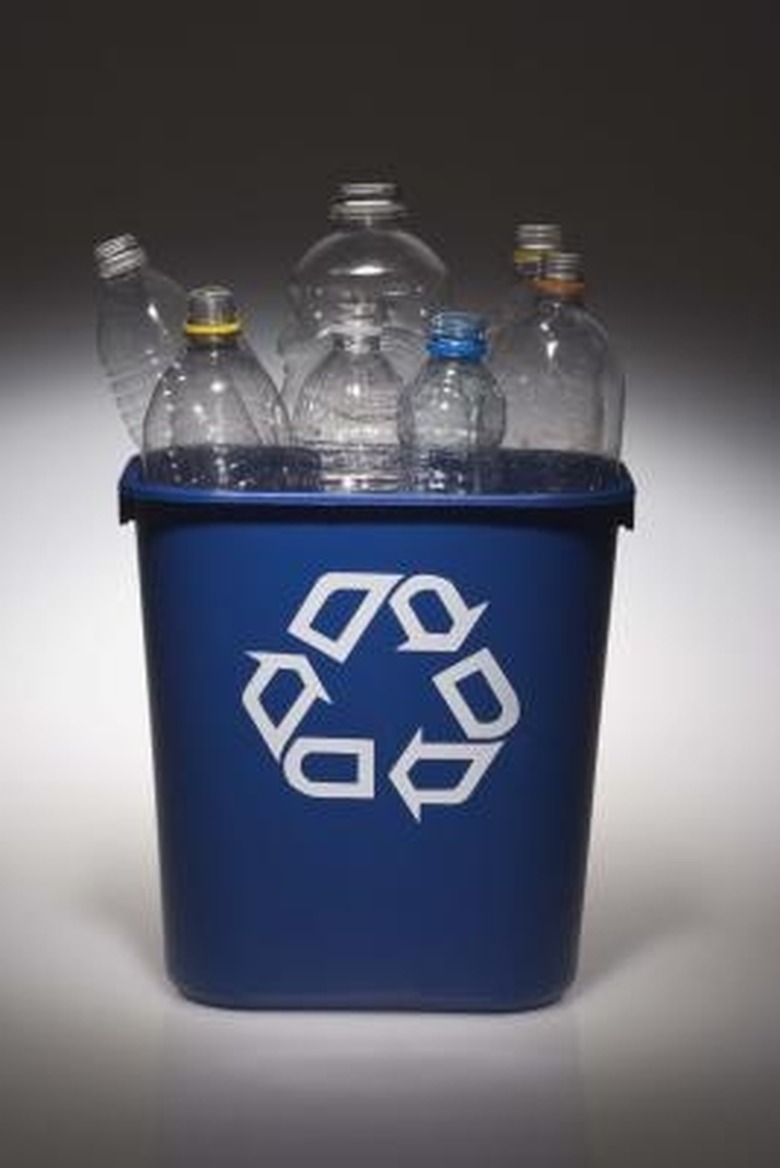Types Of Plastic Bags
According to the American Chemistry Council (ACC), using plastic bags instead of paper bags provides an excellent opportunity to be a little more green. Not only does the production of plastic bags use 70 percent less energy than the production of paper bags, according to the ACC, the process to recycle 1 lb. of plastic uses 91 percent less energy than that used to recycle 1 lb. of paper.
Plastic bags are essentially films, thin plastic sheets, typically less than 10 mm thick. Of the films used to make plastic bags, four types of polyethylene are the most common.
High-Density Polyethylene (HDPE)
High-Density Polyethylene (HDPE)
The vast majority of grocery store bags are made of HDPE. Characteristics of HDPE include moderate opacity, a propensity to crinkle, a greater degree of strength than other plastic films and a lack of ability to stretch. HDPE bags, typically identified by recycling code 2, tear easily, but because of their strength, are well-suited for use as grocery bags, bags for clothing and air cushions for packaging.
Medium-Density Polyethylene (MDPE)
Medium-Density Polyethylene (MDPE)
MDPE resins are less opaque than HDPE but not as clear as low-density polyethylene. Bags made of MDPE generally do not stretch well and are not associated with a high degree of strength. MDPE, identified by recycling code 4, is typically used in consumer packaging for paper products such as paper towels and toilet paper.
Low-Density Polyethylene (LDPE)
Low-Density Polyethylene (LDPE)
LDPE, sometimes identified by recycling code 4, is used to make bags with moderate stretch and strength properties. LDPE bags tend to exhibit a high degree of clarity and are commonly used in consumer packaging as bread bags or thick bags for newspapers. Sometimes nylon is incorporated into LDPE to make Bubble Wrap.
Linear Low-Density Polyethylene (LLDPE)
Linear Low-Density Polyethylene (LLDPE)
Slightly thinner than LDPE, LLDPE is characterized by a stretchy consistency. These films typically feel tacky and exhibit a moderate degree of clarity. Generally used for stretch wrap, dry cleaning film, agricultural films and thin newspaper bags, LLDPE is normally identified by recycling code 4.
Recycling
Recycling
According to the ACC, 12 percent, more than 830 million lbs., of plastic bags and film was recycled in 2007. Recycled applications for plastic bags include construction and building products and new plastic bags. With the exception of LLDPE used for agricultural purposes, any of these bags can be included in the recycling bin wherever collection bins are labeled for plastic bag recycling.
The ACC recommends that consumers check with their local grocery stores to determine if their stores sponsor plastic bag collection. For consumers looking for municipal drop-off centers, www.plasticbagrecycling.org provides a listing of community recycling programs across the country.
Cite This Article
MLA
Gordon, Samantha. "Types Of Plastic Bags" sciencing.com, https://www.sciencing.com/types-plastic-bags-5497180/. 24 April 2017.
APA
Gordon, Samantha. (2017, April 24). Types Of Plastic Bags. sciencing.com. Retrieved from https://www.sciencing.com/types-plastic-bags-5497180/
Chicago
Gordon, Samantha. Types Of Plastic Bags last modified March 24, 2022. https://www.sciencing.com/types-plastic-bags-5497180/
